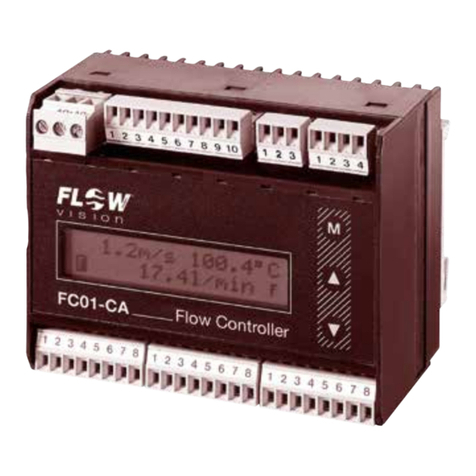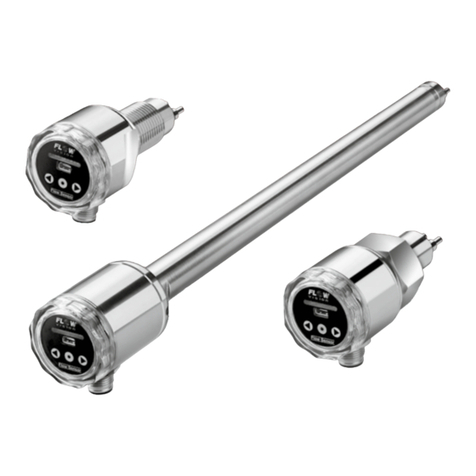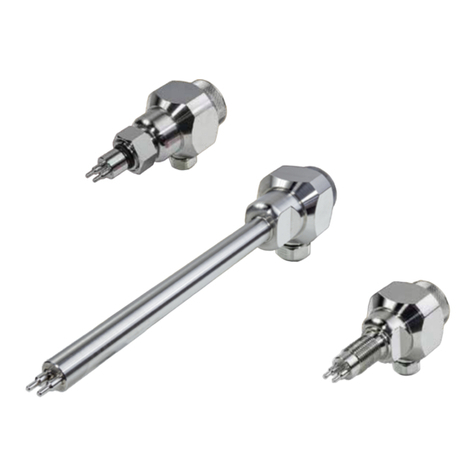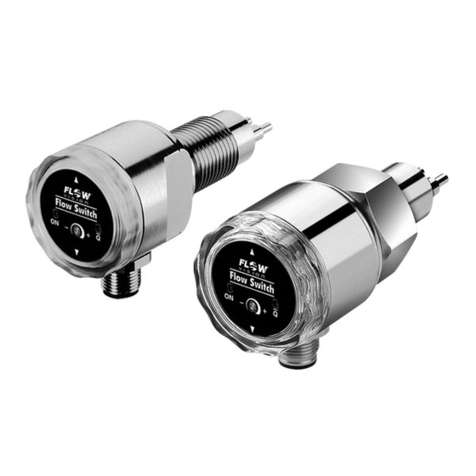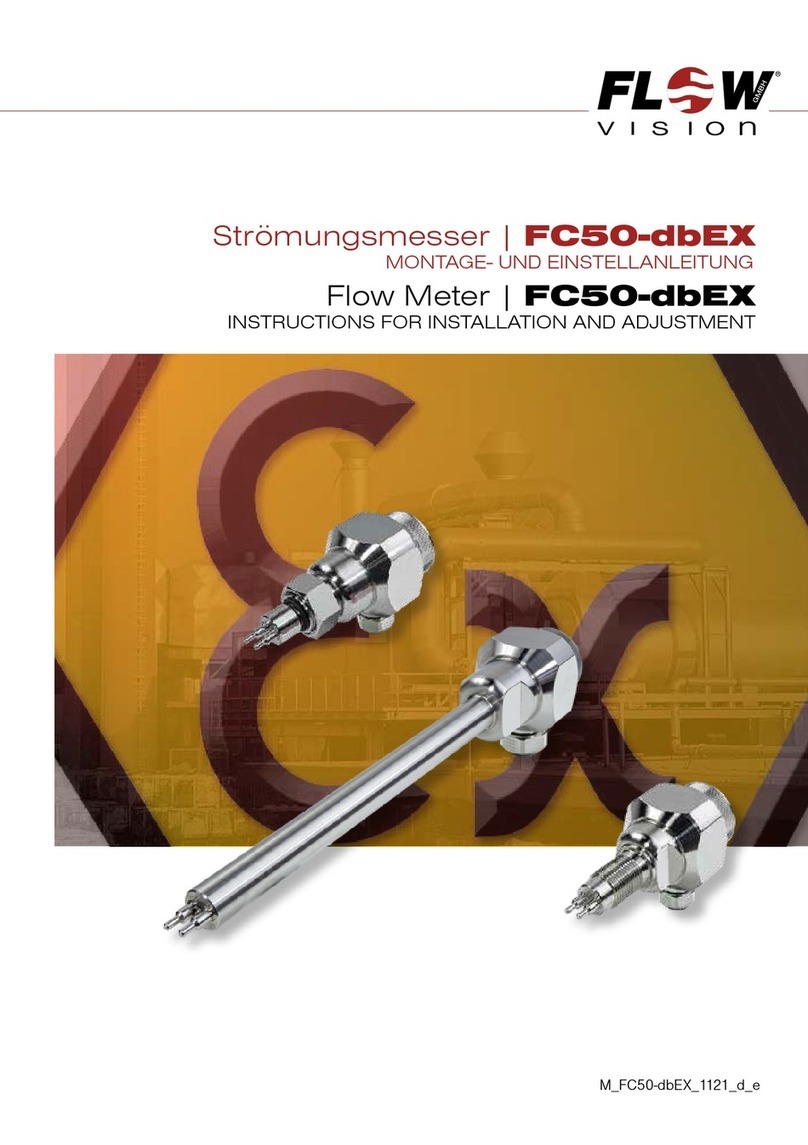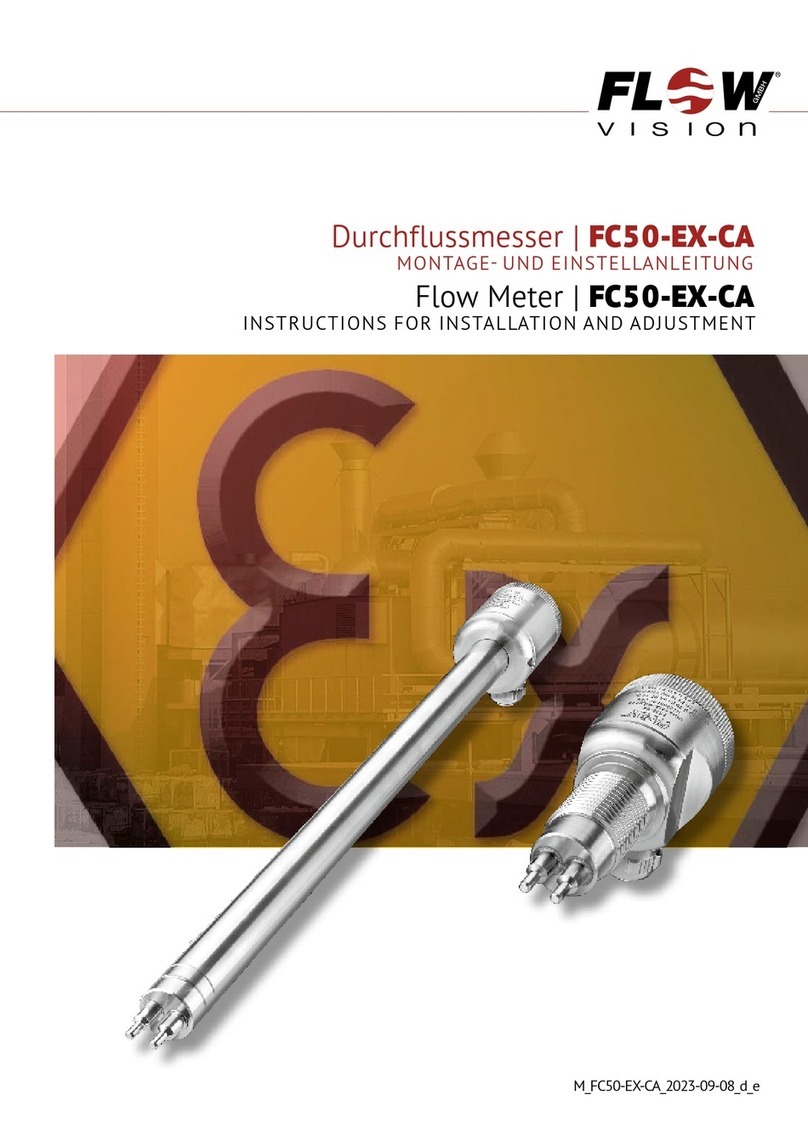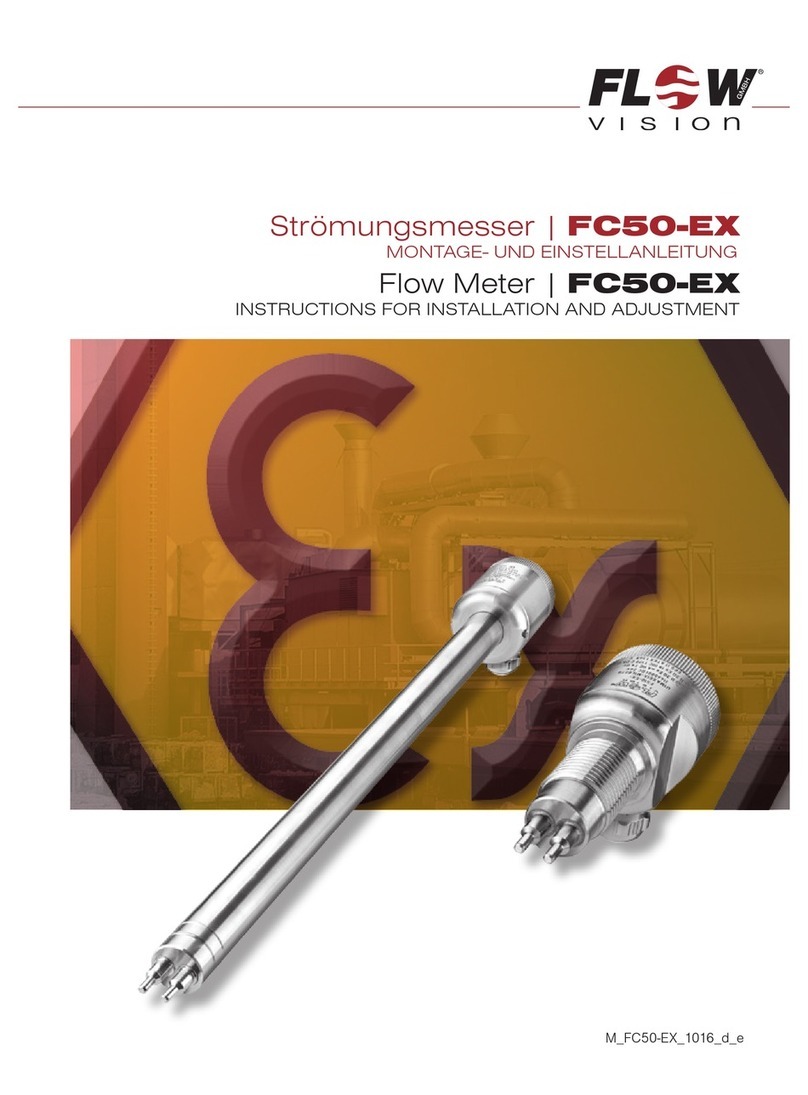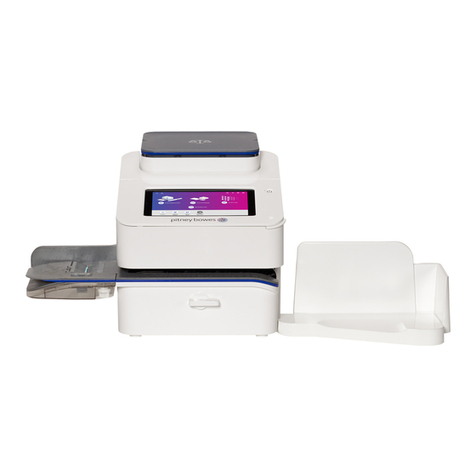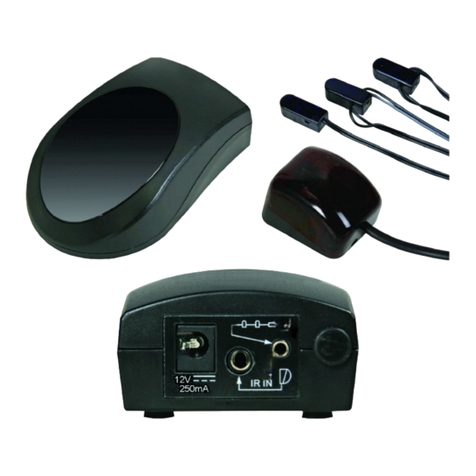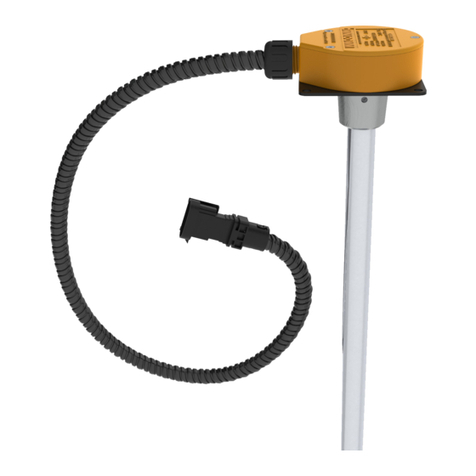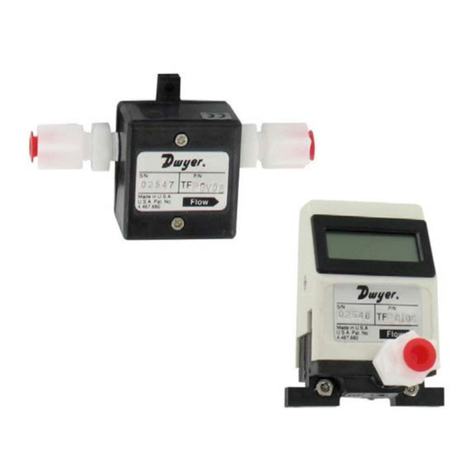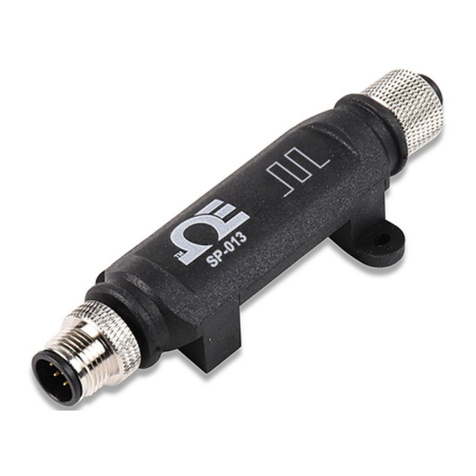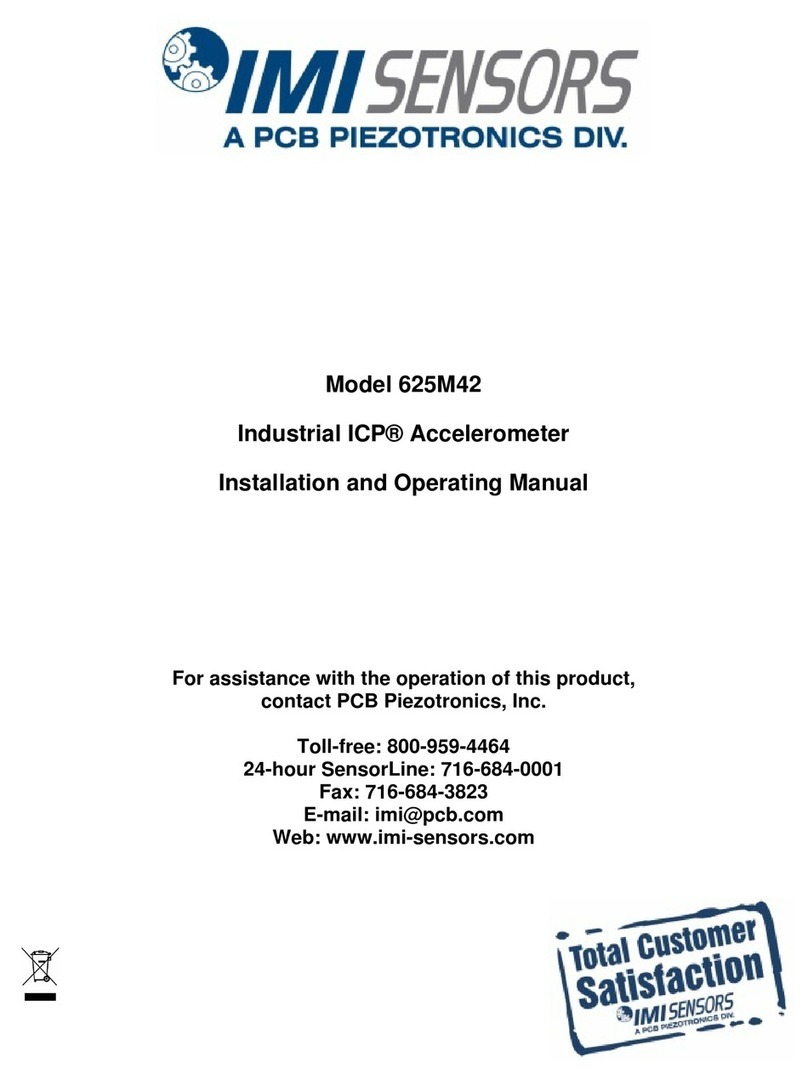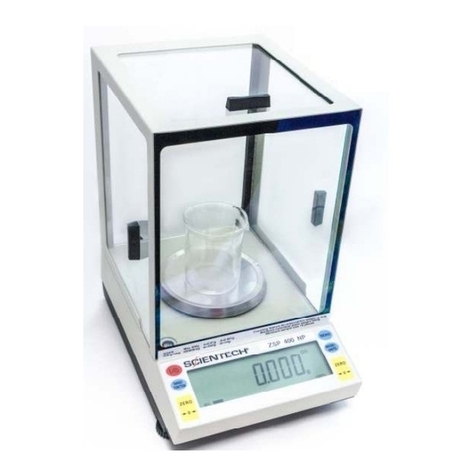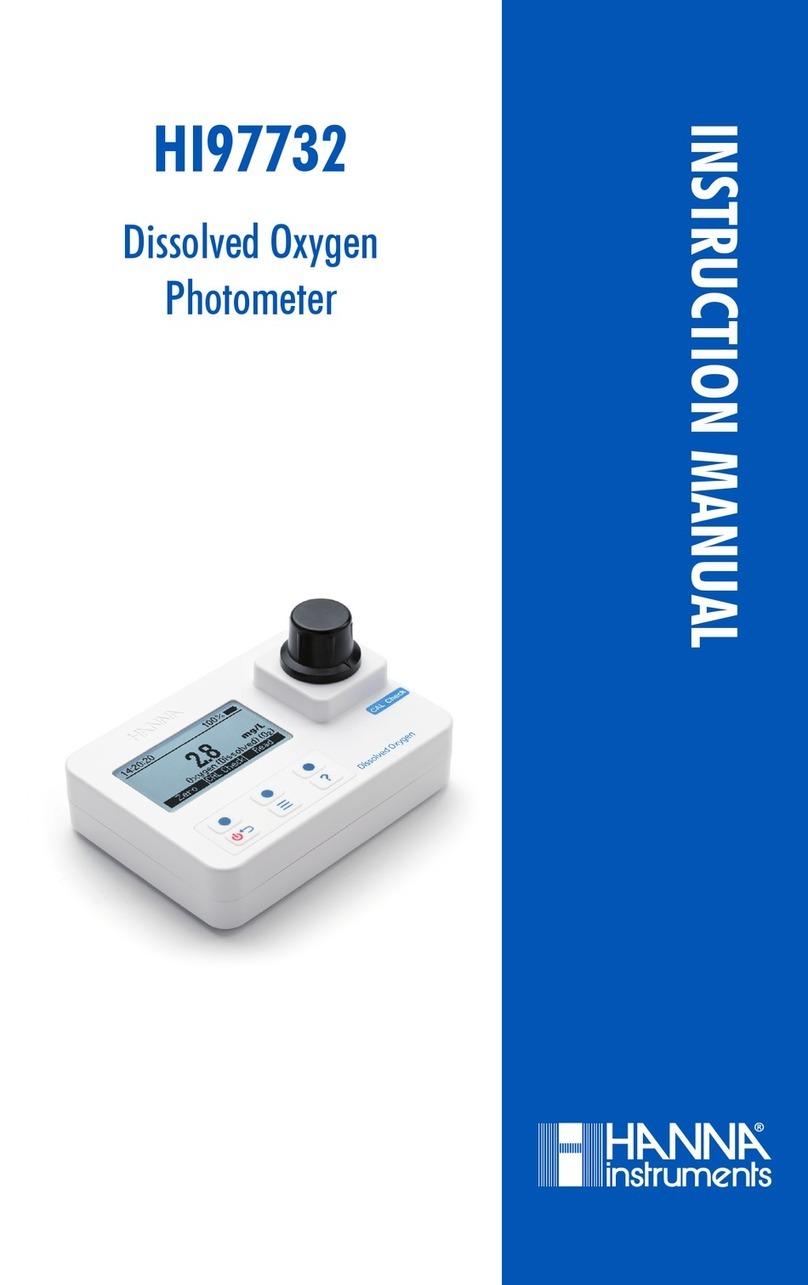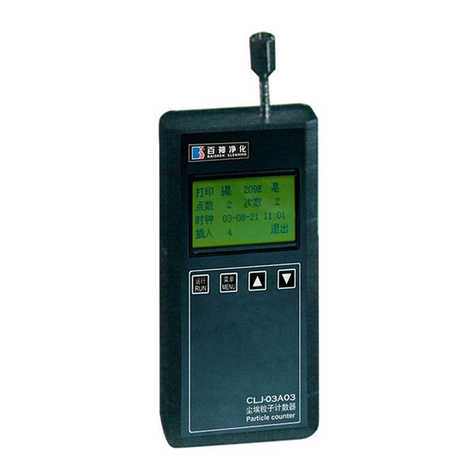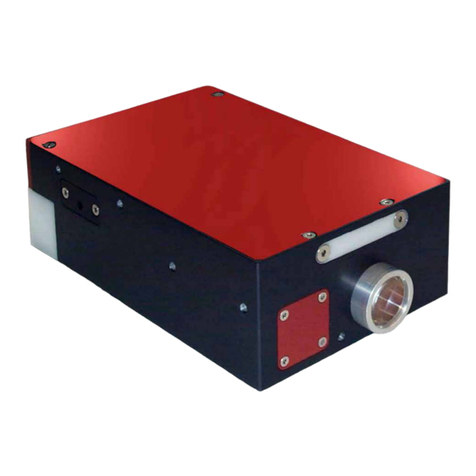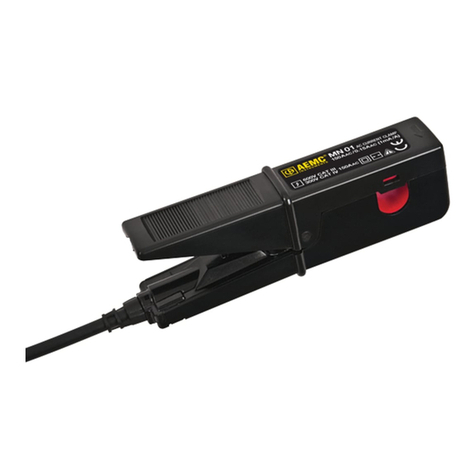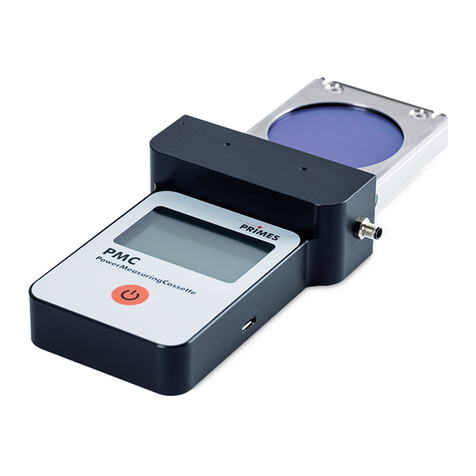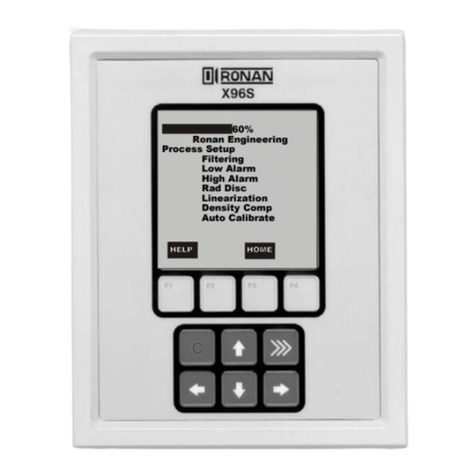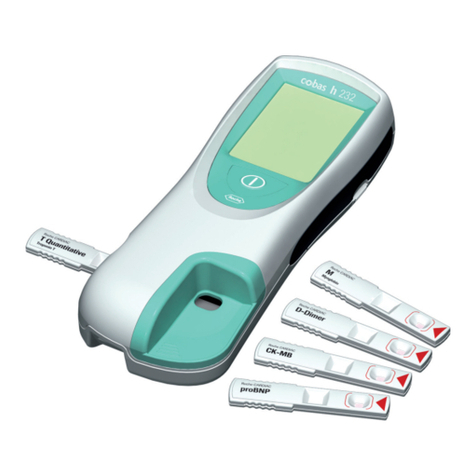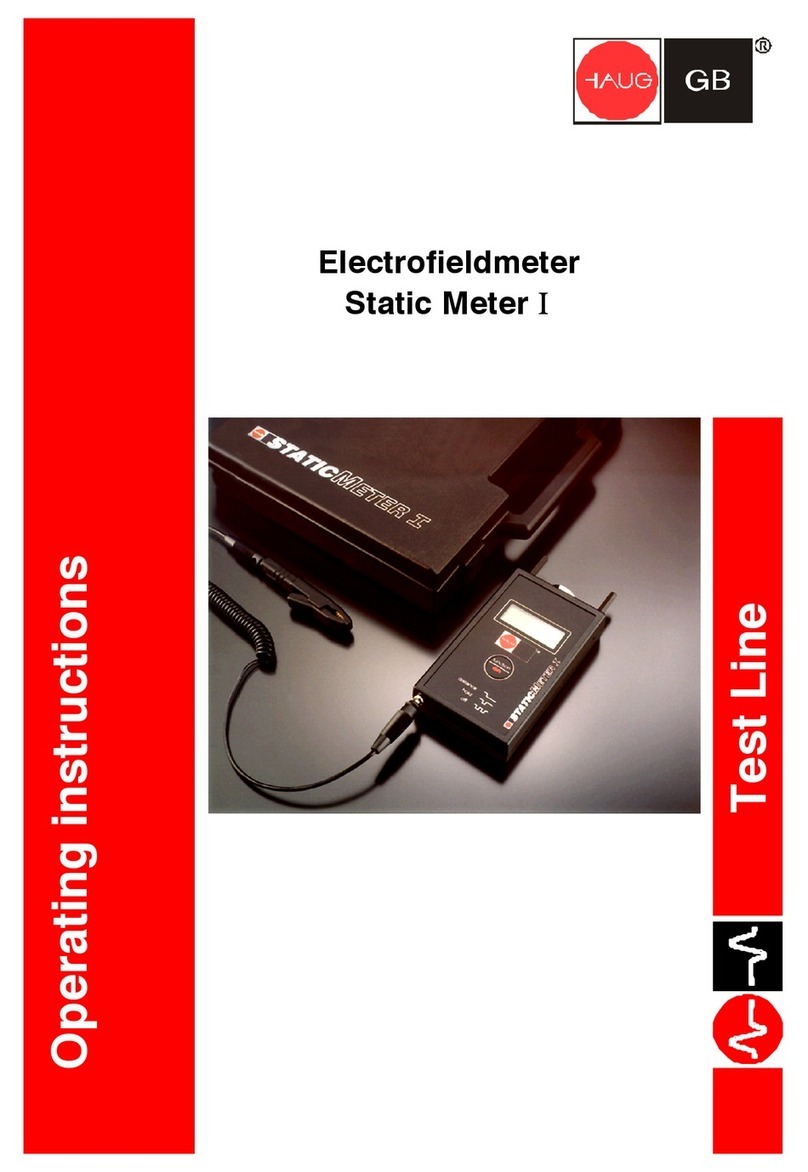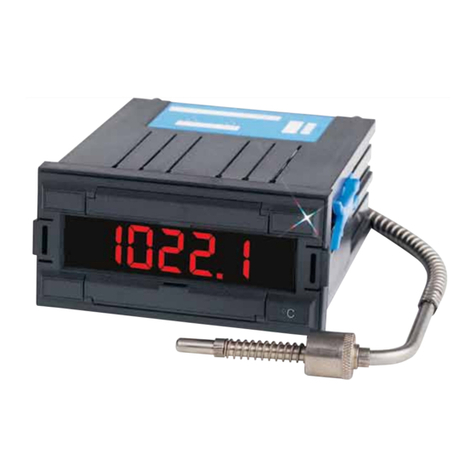
Flow Meter | FC
0
1- Ex
TABLE OF CONTENTS
4
3 Normal atmosphere - Definitions and mounting instructions.................25
3.1 Measuring procedure ......................................................25
3.2 System description . . . . . . . . . . . . . . . . . . . . . . . . . . . . . . . . . . . . . . . . . . . . . . . . . . . . . . . . 26
3.2.1 User interfaces .....................................................27
3.3 Customer calibration .......................................................29
3.3.1 Options and advantage of customer calibration ...........................29
3.3.2 Special flow and installation conditions ..................................29
3.3.3 How to achieve higher accuracy .......................................30
3.3.4 How to achieve the full scale range .....................................30
3.3.5 Pin-point adjustment (selective accuracy) ................................30
3.3.6. Reproduction of precise measuring instruments ..........................30
3.3.7 Use of standard monitoring heads ......................................30
4 Technical implementation of customer calibration......................31
4.1 Calculation ...............................................................31
4.2 Calibration ...............................................................31
4.2.1 Selection of CTD value (temperature differential)...........................31
4.2.2 Trim point selection - number and position . . . . . . . . . . . . . . . . . . . . . . . . . . . . . . . 34
4.2.3 MAX-MIN Calibration procedure........................................34
4.2.4 Zero point, directional discrimination and upper characteristic curve value .....35
4.2.5 New curve / Old curve ...............................................35
4.2.5.1 New curve .................................................35
4.2.5.2 Old curve .................................................36
4.2.6 Transfer of C- and T values - Re-establishment of T value ...................36
4.2.6.1 Establishing the T value - general ..............................36
4.2.6.2 Establishing the new T value ..................................37
4.2.7 Expanding the characteristic curve .....................................38
5 Operation ....................................................... 39
5.1 Operating system..........................................................39
5.1.1 Configuration .......................................................41
5.1.1.1 Selection of monitoring head (menu option: SENSOR SELECT) .......41
5.1.1.2 Monitoring head data (menu option: SENSOR CODE) ..............41
5.1.1.3 Medium selection (menu option: MEDIUM SELECT) ................41
5.1.1.4 Custom designed calibration (menu option: CUSTOMER TRIM) .......41
5.1.1.4.1 Access to menu option CUSTOMER TRIM ..............41
5.1.1.4.2 Old curve / New curve..............................42
5.1.1.4.3 Number of trim points ..............................42
5.1.1.4.4 Determining the temperature differential ................42
5.1.1.4.5 Automatic calibration ...............................42
5.1.1.4.6 Manual calibration .................................42




















